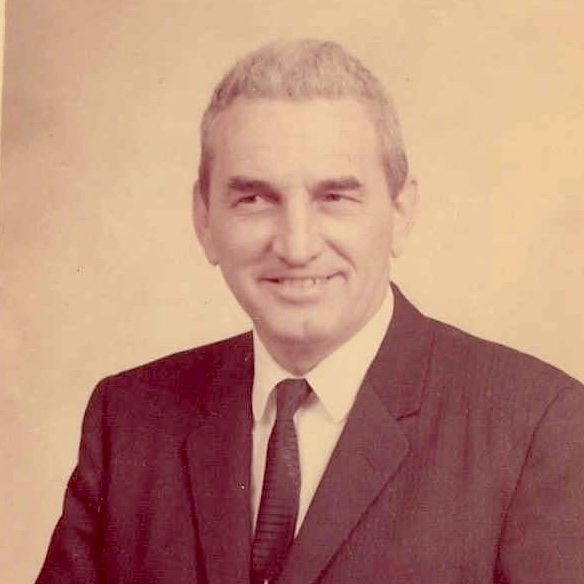
George Codrick never considered himself a gambler. Indeed, it wasn’t gambling if you applied a surefire mathematical formula to betting at the racetrack, honed from years of studying the daily racing form and tracking thoroughbred speeds, track conditions and any number of other variables.
George never bet on the famous horses because of the piddling payouts. Instead, his father taught him to exercise restraint and be laser-focused on the stats of a dozen or so equine competitors. When one of George’s picks came to Philadelphia Park or Garden State Park, he placed a $75 bet on Race 9. More often than not, he came home with $1,500.
If he did lose, he brushed it off: “Don’t worry about it,” he consoled his son, Joe. “That’s not my money.”
Born to a conservative Methodist mother who ruled with an iron fist and a traveling salesman father who checked out for extended periods, George straddled the line between virtue and vice — and emerged with his morality unscathed. Betting at the track was a fun math puzzle for him. Nothing more.
Once he had a family of his own, George enjoyed vacationing in Ocean City. His wife’s uncle would walk across the bridge to procure libations, while the teetotaler merrily stayed behind with the kids.
His middle name was Lincoln for a reason. George assumed that everyone was decent and good.
“Everyone is born with his honor. No one can take it away,” he was fond of saying. “But if you lose it, you will never get it back.”
On December 29, 1982 around dinnertime, George was driving home from his job working the desk and pushing packages at the Hunting Park Post Office when, as usual, he called Edie to see if she needed anything from Wawa. The next day, the couple had planned to travel to the Pittsburgh area to meet their first grandchild, who was two weeks old. That night, George’s youngest sister, Dorothy, was celebrating her birthday.
After picking up a package of Fig Newtons and carton of milk, George parked in front of his house at 5523 N. Marshall St. in the Olney section of Philadelphia.
The shopping bag never made it out of the car.
His daughter discovered her 63-year-old father collapsed at the foot of their front steps. The family initially suspected a heart attack until they saw the hole from the bullet that entered George’s right arm and tore through his aorta.
Police classified George’s death as a random act of urban violence. The case has remained unsolved for nearly three decades — and not for lack of trying.
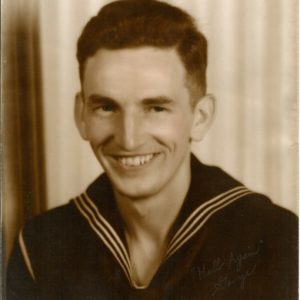
Edie knew people in high places. As the longtime confidential secretary to Fitz Eugene Dixon Jr., a philanthropist and former owner of the 76ers, she counted among her friends former Phillies relief pitcher Tug McGraw, former mayor Frank Rizzo, and former Vice President Nelson Rockefeller, whom she called “Rocky.”
Fitz and George’s family continuously pressed The Roundhouse and then-Philadelphia Mayor William J. Green III for answers. But George was killed during the lull between Christmas and New Year’s, when the streets were empty apart from the occasional boom of Roman Candles blasting glittery stars. The trail went cold.
Rebecca Craven Greenhow remembers seeing her uncle George in his open casket, a cryptic grin on his face.
“The man had no enemies,” she said. “He was a man who lived by love your neighbor.”
George was buried at Forest Hills/Shalom Memorial Park in Huntingdon Valley near his mother, who had passed one year earlier. Thankfully, she was not around to mourn the death of a fourth son, Rebecca said.
Etched into George’s tombstone is one of his classic retorts: “If I knew what I was doing, I wouldn’t be here.”
Born on Oct. 22, 1919 in Kensington, George grew up with a pile of gabby siblings. They helped raised one another and traveled in a pack, occasionally hurling dirt bombs at resident comedian and lush W.C. Fields.
George was number seven of eight, but he lost three of his brothers to various misfortunes before he graduated elementary school. The family soldiered on. Their three-story rowhouse was one of the first on the block to have electricity and neighbors gawked at the kids’ collection of bikes.
During the Depression, George’s father switched from peddling furniture to persuading his female clientele to treat themselves to one nice dress, using his wife, Hannah, as a model.
The couple also gave back to the community, following the Biblical doctrine of helping the triad of the vulnerable — the widow, the orphan and the stranger. For a time, an impoverished widow and her rambunctious son lived with George’s family.
George attended the North East Manual Training School, also known as Edison High School, but did not finish. He joined the Navy as a mechanic on a PBY Catalina seaplane, and, in 1941, was sent to the South Pacific during World War II. His only injury came from running down the wing of a plane and misjudging the distance to the dock. He did admit to killing a downed Japanese pilot in self-defense.
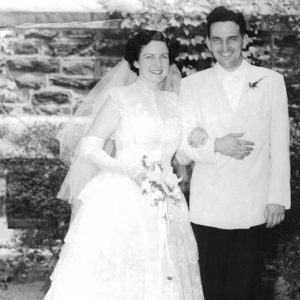
A pacifist, George rarely bragged about his wartime escapades to his family, though he continued to drink powdered milk long after his return.
In 1948, he earned his GED and volunteered to teach Sunday school at Oak Lane Presbyterian Church. By that time, his parents had moved to a palatial home in Oak Lane, and his sister, Dorothy, was determined to find George a match.
Normally gregarious, George dissolved into a puddle of social awkwardness around women. He met Edie Johnston at a party. She walked with a slight limp after surviving polio in an iron lung when she was three years old. Her face bore some resemblance to Elizabeth Taylor and George was hooked. The couple married in the fall of 1953 and set up house in Olney.
“Anybody got a crane?” George teased, when asked about carrying his petite wife over the threshold.
George secured a plum job driving the trolley. Fair-skinned with dark hair and eyes, he wore a green uniform that screamed Ralph Kramden from “The Honeymooners.”
But George was far more civilized. He kept precise time with his worn silver pocket watch and navigated the trolley down Broad Street during Hurricane Hazel in 1954, when 90 mph gusts caused the manholes to leap 50 feet in the air.
George moved on to the post office, initially assigned to 30th Street Station, where he relied on his mathematical prowess to memorize zip codes and speedily sort the mail.
He enjoyed the camaraderie of the office environment. After losing his sense of smell, George was often recruited to dispose of the decaying turkeys that were shipped during Thanksgiving.
George and Edie stuck it out in Olney, raising two boys and two girls — Glenn, Joe, Susan, and Marian. George, a natural athlete, taught all of them how to swim.
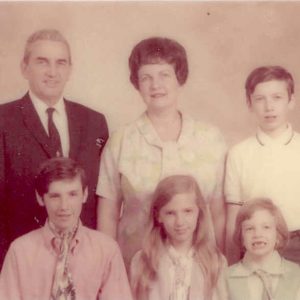
He wanted his kids to grow up in a dense, vibrant neighborhood, where friends were just a holler away. Even after Joe was knocked out by a classmate on his first day of school, George refused to move.
Edie’s job offered plenty of perks. Fitz gifted the Codricks with owner’s box or front-row seats to all the Philadelphia sports games and Forrest Theatre performances.
“We were the professional seat-fillers,” Joe recalled. While Edie hobnobbed with the city’s elite, George faded into the background and kept the children quiet, waiting for an opportunity to insert his quick wit.
One time, a goalie for the Montreal Canadiens tried to hit on George’s teenage daughter at a Flyers game.
“I’m a Canadien,” the player boasted.
“I thought you were all Canadians,” George fired back.
Money did not impress him. It was more important to be a productive member of society.
“He wanted everybody to have a purpose,” Joe remembered. “He didn’t care what you did or how you did it.”
When a demonstrably religious relative shouted “praise the Lord” at the family picnic, George bellowed, “And pass the ice cream!”
Edie died last year at the age of 94 from complications due to COVID-19. Rebecca recalled sitting with her aunt and uncle in the Phillies skybox a couple months before George’s death. George was teasing Rebecca about her new doctor boyfriend.
Edie beamed at her husband of 29 years when she introduced him to others, as if she, too, was smitten by a budding romance.
Resources are available for people and communities that have endured gun violence in Philadelphia. Click here for more information.





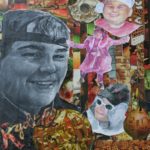




Leave a Reply